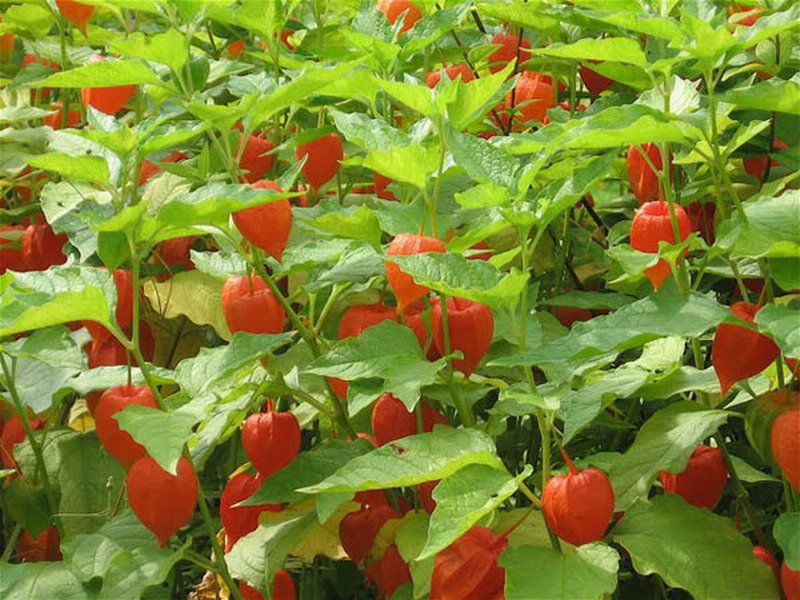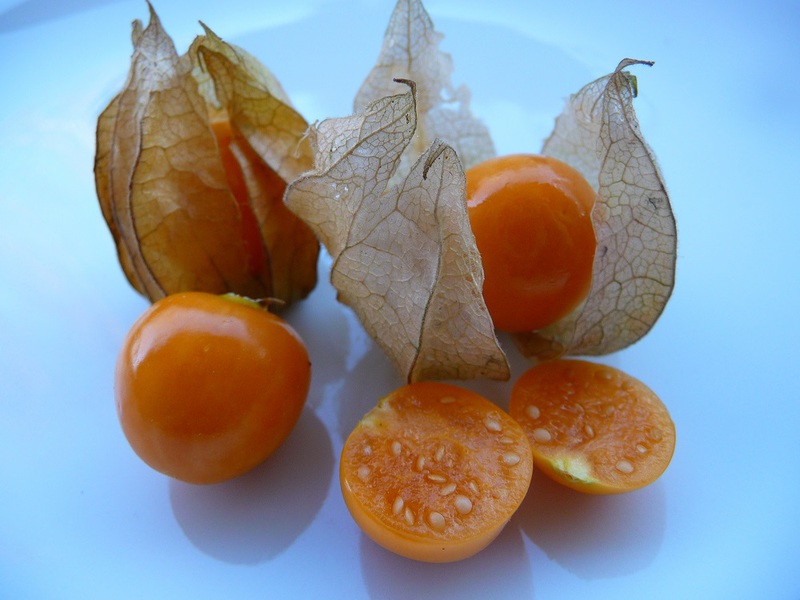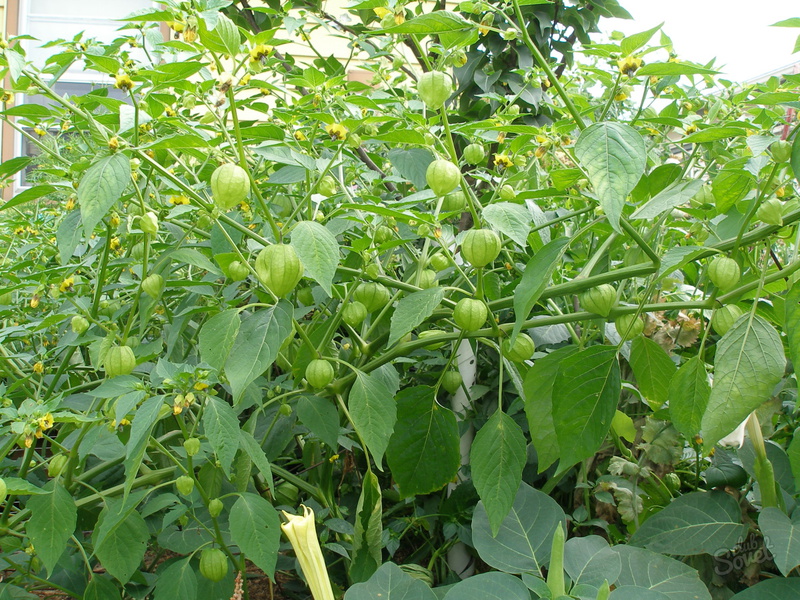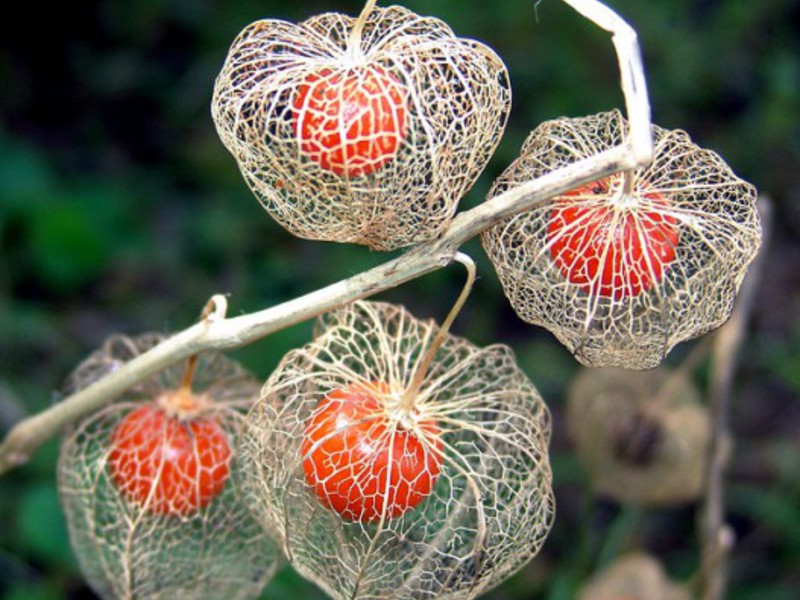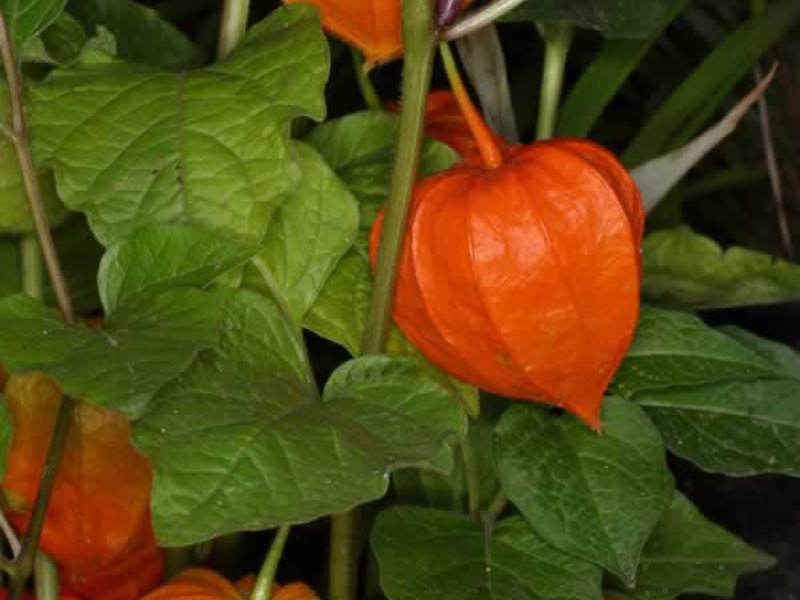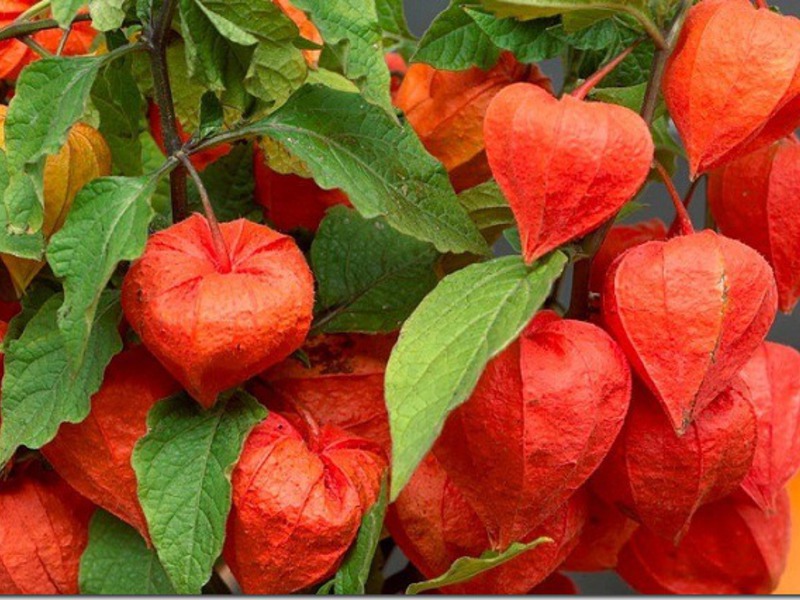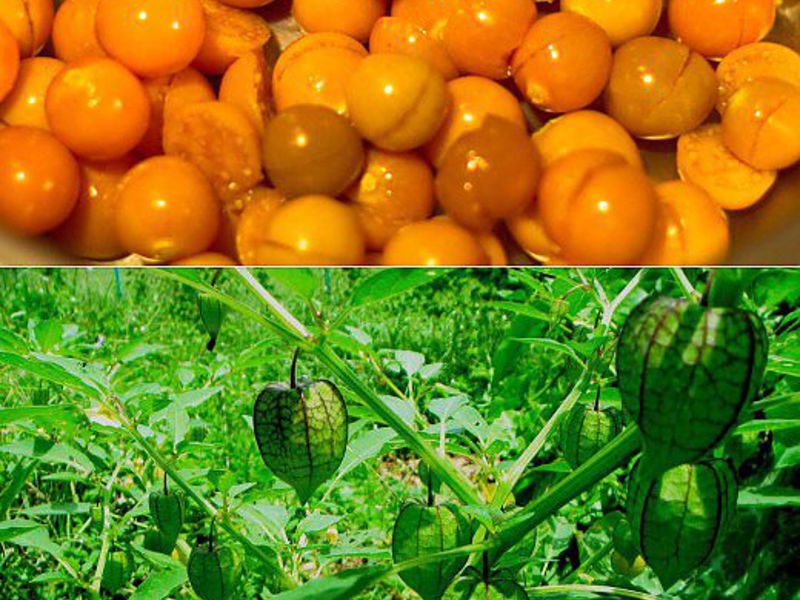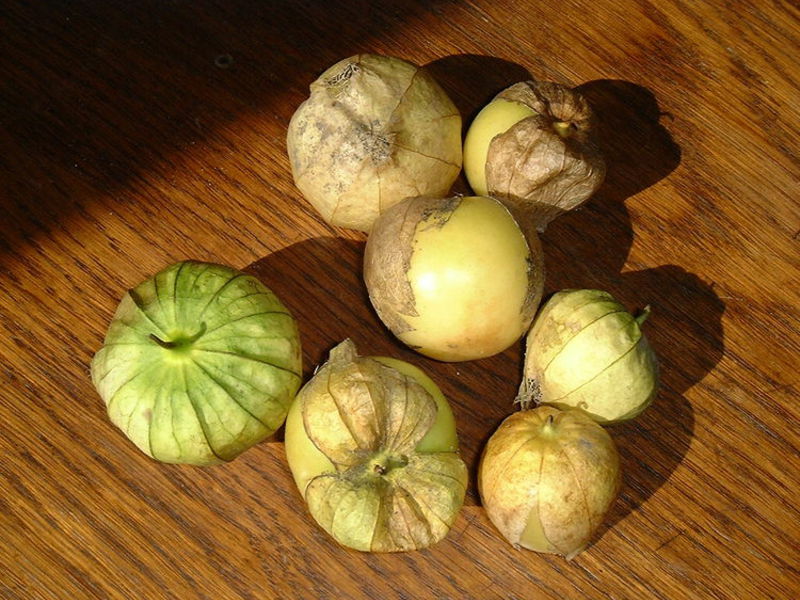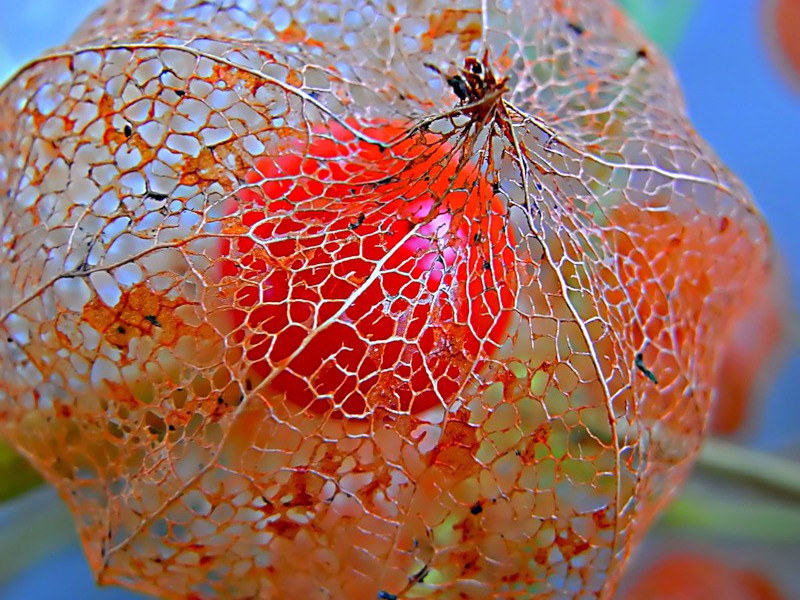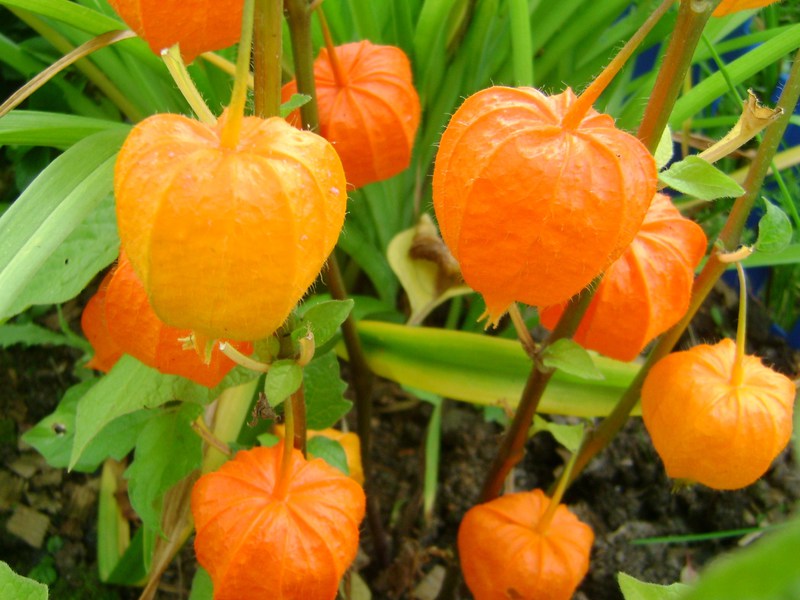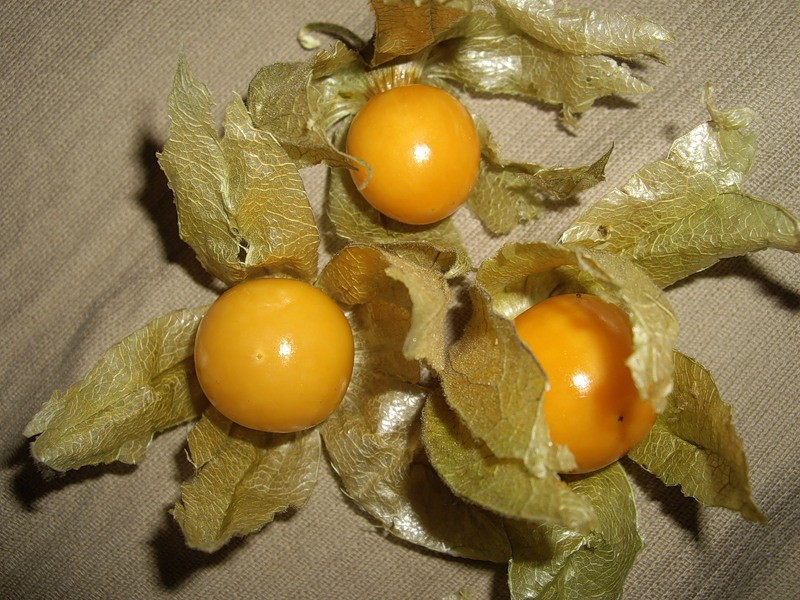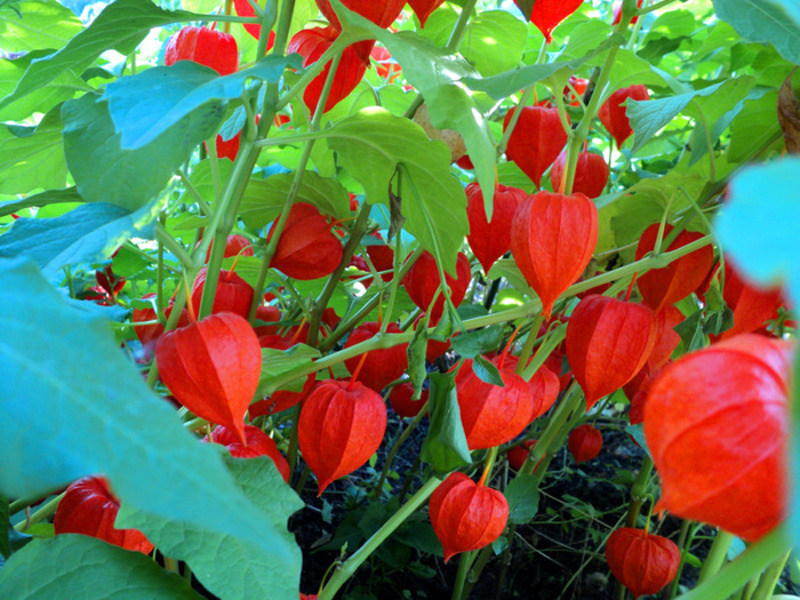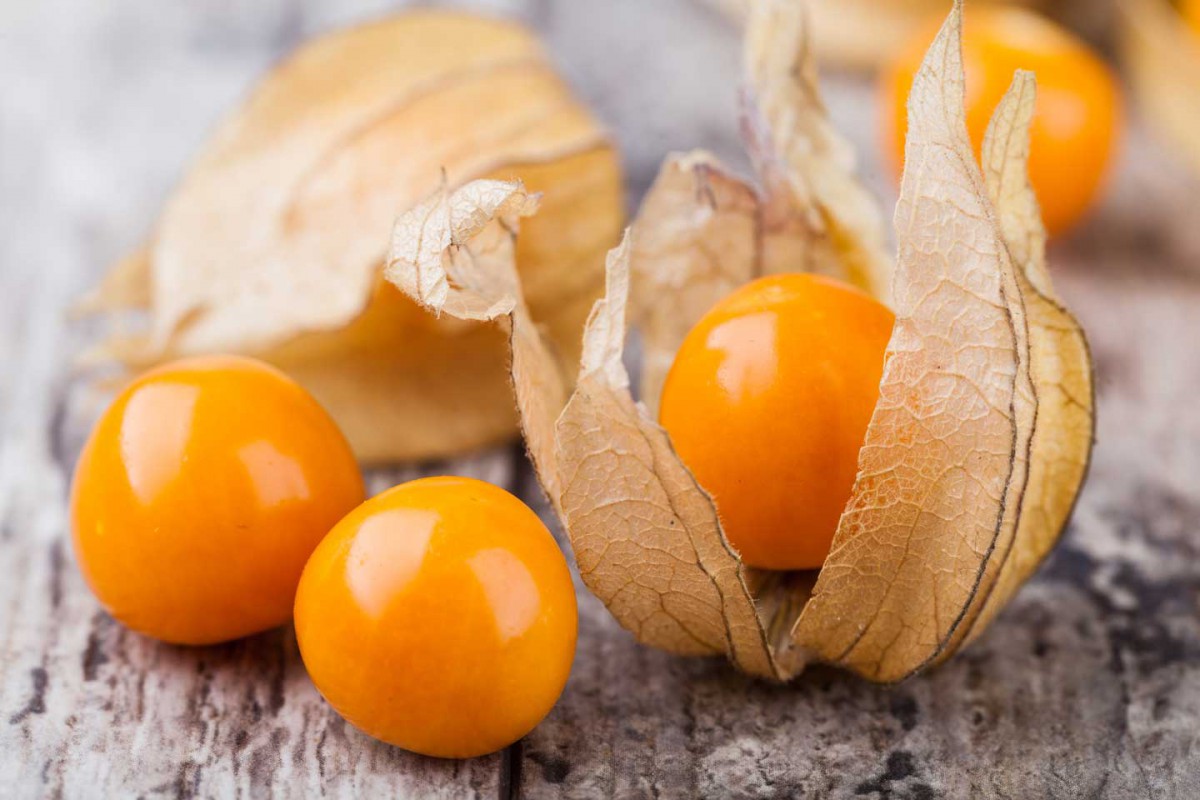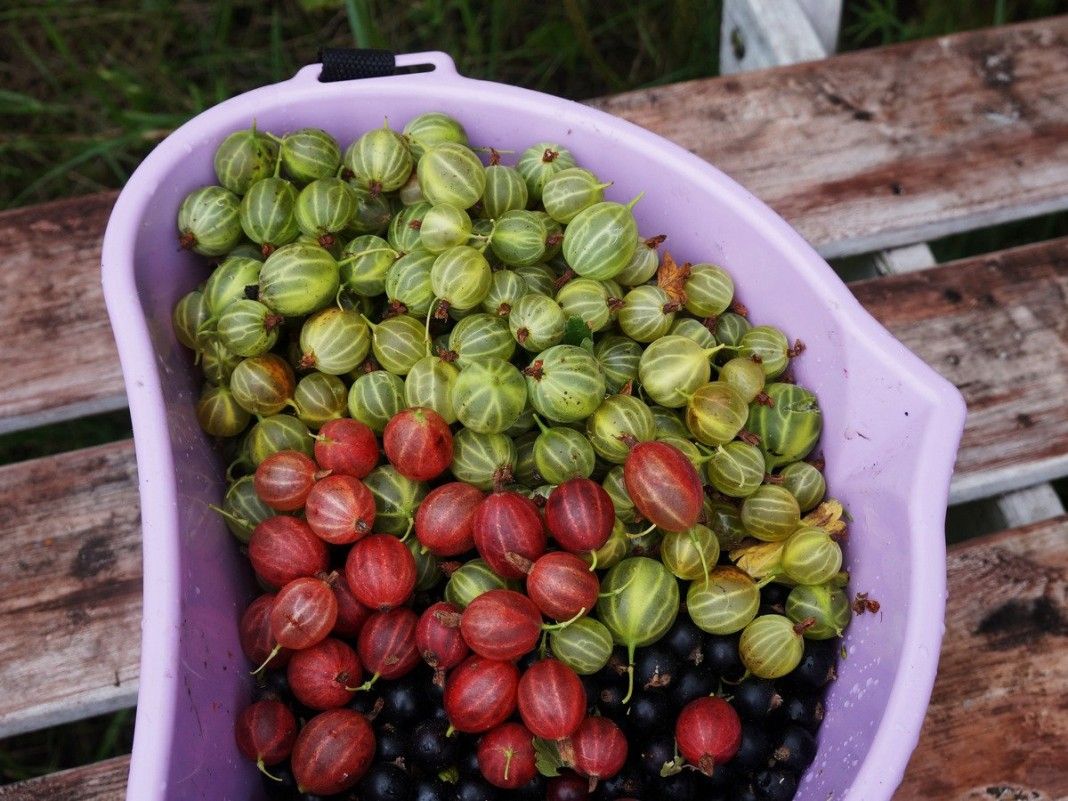 Physalis has been known to man since ancient times. The first people to get acquainted with this plant were the inhabitants of North and South America, who grew Physalis 7000 years BC. e. Moreover, this berry plant can be cultivated in the conditions of our country. Unfortunately, not all gardeners have the necessary information about the peculiarities of growing and caring for physalis. Therefore, it is so extremely rare to be found on the sites.
Physalis has been known to man since ancient times. The first people to get acquainted with this plant were the inhabitants of North and South America, who grew Physalis 7000 years BC. e. Moreover, this berry plant can be cultivated in the conditions of our country. Unfortunately, not all gardeners have the necessary information about the peculiarities of growing and caring for physalis. Therefore, it is so extremely rare to be found on the sites.
But it must be said that summer residents in vain ignore this plant. Its fruits are not only very tasty, but also rich in nutrients, and in this respect they can compete on equal terms with the tomato. Therefore, if you have already become interested in physalis, then you will probably be interested in learning about the technology of its cultivation in the country or in an apartment.
Content
Description and biological features of physalis
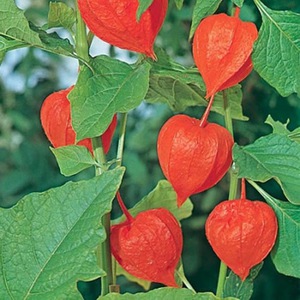 Physalis genus includes more than 110 species of this plant. However, most of them are wild, there are few cultivated varieties among them - only 4. In our country, the most widespread is vegetable or Mexican physalis, strawberry, and gluten-fruited, but the latter is grown extremely rarely.
Physalis genus includes more than 110 species of this plant. However, most of them are wild, there are few cultivated varieties among them - only 4. In our country, the most widespread is vegetable or Mexican physalis, strawberry, and gluten-fruited, but the latter is grown extremely rarely.
You can often find and physalis decorative... Its orange fruits, reminiscent of lanterns, are often used in the design of summer cottages and city flower beds. Although physalis is a classic perennial, the cultivation technique used in its relation corresponds to annuals. Therefore, sowing of seeds or cuttings are used as the main methods of reproduction.
Physalis Mexican grows in the form of a rather voluminous bush, reaching a height of no more than 1 m. The strawberry species looks more compact, which can grow up to 0.5 m. During the growing season, forms single flowers that have a different shade - yellow, green, orange. The cup, which looks like a flashlight, is also distinguished by a rich color palette. It can be yellow, green, orange, bright red and purple. Have strawberry physalis grow up fruits weighing 5-25 gramswhich give off an extremely persistent odor. The larger are the berries of vegetable physalis, the mass of which can range from 25 to 100 grams. The seeds themselves are small and can be used for sowing for 8 years.
Physalis vegetable is a family of nightshades, among whose representatives it is distinguished by the greatest resistance to negative temperatures. Seedlings can withstand frosts up to - 3 degrees. Caring for this plant is simple. This plant loves sunny areas, tolerates periods of drought, feels best on light, organic-rich soils. The important point is that the Colorado potato beetle does not show any interest in physalis. This culture is resistant to late blight, as well as other fungal diseases. This makes it more versatile, allowing you to cultivate it in the apartment, as well as in the country.
The fruits of the plant that have a sweetish taste, are rich in many useful substances:
- sugars - 12.5%;
- useful fiber - up to 1%;
- proteins - about 2 g;
- carotene -1.2 mg;
- vitamin C - up to 30 mg.
The composition also contains a large amount of organic polyacids and lysine, the uniqueness of which is associated with its ability to prevent cancer.
Physalis is sometimes called the ashwagandha plant, the healing properties of which have been used by Indian healers since time immemorial:https://flowers.bigbadmole.com/en/lekarstvennye-rasteniya/lechebnye-svoystva-i-protivopokazaniya-ashvagandy.html
A little about the most popular species and varieties
To remain completely satisfied, it is better to choose the best physalis varieties for growing, which do not pose any problems in care.
Physalis vegetable
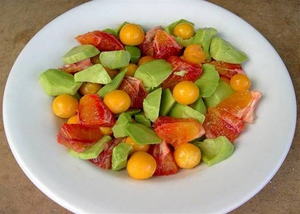 Among all types of edible physalis, the most interesting is mexican look... Many gourmets have enjoyed the fruits of this plant. Therefore, they are often used for cooking in many restaurants. One plant can bear up to 200 fruits per season, which can have different colors. The only thing that remains unchanged is the flashlight cover, which is always yellow-green. Vegetable physalis is used in food in a variety of forms: raw, pickled, salted. It is also used as a basis for the preparation of caviar, as well as a variety of confectionery products: marmalade, preserves, candied fruits, fruit sweets.
Among all types of edible physalis, the most interesting is mexican look... Many gourmets have enjoyed the fruits of this plant. Therefore, they are often used for cooking in many restaurants. One plant can bear up to 200 fruits per season, which can have different colors. The only thing that remains unchanged is the flashlight cover, which is always yellow-green. Vegetable physalis is used in food in a variety of forms: raw, pickled, salted. It is also used as a basis for the preparation of caviar, as well as a variety of confectionery products: marmalade, preserves, candied fruits, fruit sweets.
Among the varieties, there are species that have best taste properties:
- Kinglet;
- Gribovsky soil;
- Moscow early;
- Large-fruited;
- Likhtarik.
The plants listed above are usually referred to the group of canned salad.
Physalis strawberry and berry
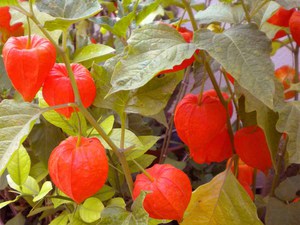 This type of physalis is known as Florida or pubescent. It grows miniature pea-sized fruits, but they are sweeter and more aromatic. In this regard, they can compete with strawberries and raspberries, since they contain twice as much fruit sugars. From a practical point of view, it makes sense to engage in the cultivation of strawberry physalis in the event that one of the family members suffers from diabetes. Fruit have a bright amber color.
This type of physalis is known as Florida or pubescent. It grows miniature pea-sized fruits, but they are sweeter and more aromatic. In this regard, they can compete with strawberries and raspberries, since they contain twice as much fruit sugars. From a practical point of view, it makes sense to engage in the cultivation of strawberry physalis in the event that one of the family members suffers from diabetes. Fruit have a bright amber color.
One plant can produce up to 3 kg of delicious berries per season. They can be consumed not only fresh, but also dried. However, in this case, changes occur to them: dried fruits become very similar to raisins. Before using for food, physalis fruits must be treated with boiling water. This will help remove the sticky substance that is present on the surface of the berries. Because of this, the fruits have a somewhat unusual taste that some people may not like. The best taste properties are possessed by the fruits of the Candy and Philanthrop varieties.
Physalis raisin
It is usually considered as a variety of strawberry physalis... This species stands out with a more pleasant taste, since it has a slight sourness and a pineapple flavor. The juice of this plant is very unusual, which resembles tangerine.
Physalis Peruvian
This variety has many fans all over the world. The uniqueness of its fruits is given by a refined fruity taste with sourness, they give off the smell of grapefruit. The berries themselves are large and flattened, with a pronounced orange strawberry aroma emanating from them. The best flavoring properties are possessed by the fruits of the varieties Columbus, Kudesnik. In dried form, they become similar to dried apricots, however, the difference is still present here, since their taste becomes brighter.
Physalis decorative
This plant can reach a height of 60 cm, has white flowers that do not have a decorative effect. Physalis begins to transform with the onset of autumn, when he has bright orange lanterns containing red berries inside. However, such flashlights do not last long and gradually change their color to transparent.
At this moment, only veins and berries can be distinguished. Growing physalis is a fairly simple exercise, since it is a perennial, which will grow its rhizome over the years. Twigs with lanterns have bright decorative properties, so they can be included in dry bouquets. This plant forms an excellent composition in combination with lunaria.
List and features of plants of the Solanaceae family:https://flowers.bigbadmole.com/en/dikorastuschie-rasteniya/spisok-rasteniy-semeystva-paslenovyh.html
Growing physalis from seeds
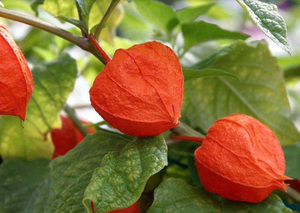 Physalis is believed to be an excellent choice for lazy gardeners. And there is a logical explanation for this. Physalis is not only frost-resistant, but also its fruits quickly reach maturity. Providing favorable conditions, it can give a high yield.
Physalis is believed to be an excellent choice for lazy gardeners. And there is a logical explanation for this. Physalis is not only frost-resistant, but also its fruits quickly reach maturity. Providing favorable conditions, it can give a high yield.
The gardener does not have to spend a lot of time and effort growing seedlings from seeds. Instead, open ground can be sown in early spring. Moreover, this will need to be done only once. Subsequently he will form seedsthat will provide you with new plants. However, if it is important for you to get tasty physalis berries as soon as possible, then it is best to use the seedling growing method.
In principle, the gardener does not need to delve into the peculiarities of this crop in order to get a high yield of physalis from seeds. This plant grows well on heavy and sandy soils, the situation does not change too much if, instead of a lighted area, plant physalis in the shade.
Sowing seeds for seedlings
You can plan this operation right after the New Year. For these purposes, it is recommended to use separate containers, for example, cups with a volume of 0.5 l.
- with the onset of March, they are transplanted into a common flowerpot or planting box;
- when the time comes to plant seedlings in the ground, you need to be very careful not to damage the root system when separating the bushes;
- when the ambient temperature is above + 8 degrees, you can start hardening the seedlings, for this, the seedlings are taken out into the fresh air.
Physalis fruiting
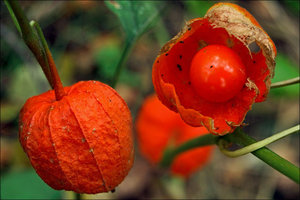 To get the first fruits from seeds, about 100 days should pass from the moment of germination. Physalis berries grow in places where the stem branches. Most of the crop is produced on two first-order shoots and four second-order shoots. In other areas, the berries grow one by one, and they often have non-standard sizes.
To get the first fruits from seeds, about 100 days should pass from the moment of germination. Physalis berries grow in places where the stem branches. Most of the crop is produced on two first-order shoots and four second-order shoots. In other areas, the berries grow one by one, and they often have non-standard sizes.
Fruiting lasts until the first frost... You can determine that the berries are ripe by the color change and the beginning of their shedding. It is recommended to plan harvesting the fruits of edible physalis on a sunny day. In early September, you need to pinch the tops, as a result, the plant will spend energy not on the growth of branches, but on the formation of fruits.
About blueberries forte, which has nothing to do with blueberries, and the most direct thing to the Solanaceae family:https://flowers.bigbadmole.com/en/yagody/rastenie-chernika-forte.html
Sometimes with the arrival of frost, most of the berries do not have time to reach technical maturity. In this case, the situation can be corrected by ripening them. The gardener will have to dig a bush from the ground with roots, transfer it to a dry, frost-free room and hang it in it. Such a measure allows you to harvest until the New Year, and in some cases, until spring. The gardener does not have to take any action: when the berries are ripe, they themselves will fall to the ground. But you need to lay a soft rag under the plants so that they are not damaged. Usually, unripe physalis berries without defects ripen in 3-4 months. Ripe berries can be stored for 2 months at temperatures from 1 to 5-6 degrees.
Harvesting of edible physalis seeds is carried out using a similar technology, as in the case of tomato.
First, healthy, large, ripe fruits are selected, which need to be cut into two parts, placed in a container filled with rainwater, and allowed to stand for 24 hours so that the pulp becomes soft.In the future, it is necessary to separate the seeds from the pulp using a sieve, then rinse and dry them. Physalis fruits have very small seeds - more than 1000 pieces per 1 gram.
If the gardener grows several varieties on the site, then there is a high probability of mixing them. it the plant is perfectly pollinated with others... At the same time, the fruits of edible physalis grown as a result of cross-pollination with several varieties have the same size and taste as the original, and in some cases surpass it.
Conclusion
Among the famous cultures there are many that many gardeners undeservedly ignore. Physalis is just such, which forms tasty fruits of bright orange color. It is very easy to care for it as it can grow in any soil. Moreover, in some cases it is not even possible to waste time and energy on growing seedlings, but to sow seeds directly into the ground. This will have to be done only once, since in the future, young layers will begin to grow from the physalis bush.
